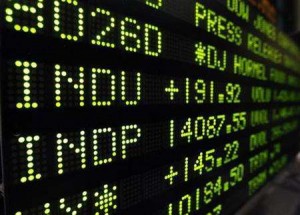What is a Stock Buyback?
If you pay any attention to business news, you will no doubt hear stories on how so-and-so company is implementing a stock buyback program or how they are increasing the amount of their current stock buyback program. The question is, what the heck is a stock buyback program and as an investor, should you care? Is this good for you or bad for you?
What is a Stock Buyback?
Before we get into the advantages and disadvantages of stock buybacks, we need to talk about and understand what a stock buyback is in the first place. A stock buyback is when a company goes out and buys back and retires shares of its own stock.
A little background on this: when a company goes public, it issues a set amount of shares, say 10 million. The money earned from issuing these 10 million shares goes to the company, which they then use to fund growth of the business – buy plants, equipment, etc. Once those 10 million shares hit the open market, the company never sees another dime when they are traded. Now the two parties involved are you and I when we buy and sell to one another through our brokers.
Along the way, if the company needs more money, they can issue new stock. The same logic above applies here, when the shares hit the open market for the first time, the company reaps the reward.
A stock buyback is simply this in reverse. Instead of issuing more new stock, the company buys back or retires stock. So, if the company above that issued 10 million shares issues a 5 million share stock buyback, there will be 5 million shares outstanding when the program is complete.
Why Conduct a Stock Buyback?
There are a few reasons why a company would complete a stock buyback. The first is to own a larger percent of the company. Taking the 10 million shares example above, the company would not issue all 10 million shares to the public. This is because a share of stock represents ownership in the company. The company wants to maintain control and decision-making power so they will only allow 49% or less of those 10 million shares to go public. So, by issuing a stock buyback, the company could increase its ownership from say 55% to 60%.
Another reason why a company issues a stock buyback is to stop others from gaining control of the company. This is essentially the same idea as above. If the company sees a rogue investor buying up shares and increasing ownership stake in the company, that investor may try to do a “hostile takeover” of the company. By increasing the amount of shares the company owns, they can avoid this.
How Does a Stock Buyback Benefit You?
The main way a stock buyback benefits you is by increasing your ownership in the company. Let’s say you own 1,000 shares and there are 10 million shares outstanding. You own 0.01% of the company. But, if they conduct a stock buyback program and end up with 5 million shares, your ownership went up to 0.02% without buying any more shares.
Another benefit to a stock buyback is that by having fewer shares outstanding, the ratios that the company is measured by improve. This gives the illusion to new investors that the stock price of the company is a good value and those investors buy into the stock. The buying pushes up the price of the stock and thus makes shareholders more money.
What are the Downsides of Stock Buybacks?
There are two potential downsides to stock buyback programs. The first is potential growth. When a company decides to buyback its own shares, it does so with cash. This cash could be used to reinvest in the firm in order to buy new equipment, expand operations, buy a new plant, etc. In order to conduct a stock buyback, the company has to forego the reinvesting of cash. Of course, many companies do highly detailed analyses on this and can make a strong case as to why a stock buyback is a better use of money than reinvesting back into the company.
The second potential downside of stock buybacks is when management conducts a stock buyback for all of the wrong reasons. Instead of doing so to improve financial ratios and increase shareholder value, the company will conduct a stock buyback in order to give more compensation to executives. In this scenario, the company will issue a stock buyback program, but instead of retiring the shares, the shares will be granted to top executives which provides them with higher compensation. Understand though this practice is not very common.
Final Thoughts
Overall, a stock buyback program is a good thing for investors. They increase your percentage of ownership in a company and they also encourage other investors to buy shares, which in turn drives up stock prices. This results in more value for you as a shareholder. As of today, over 400 of the 500 companies in the S&P 500 are or have conducted a stock buyback program recently. As stock prices continue to rise, the question becomes how many of these firms will continue to buy back their own shares, since it costs them more money to do so as stock prices increase.





